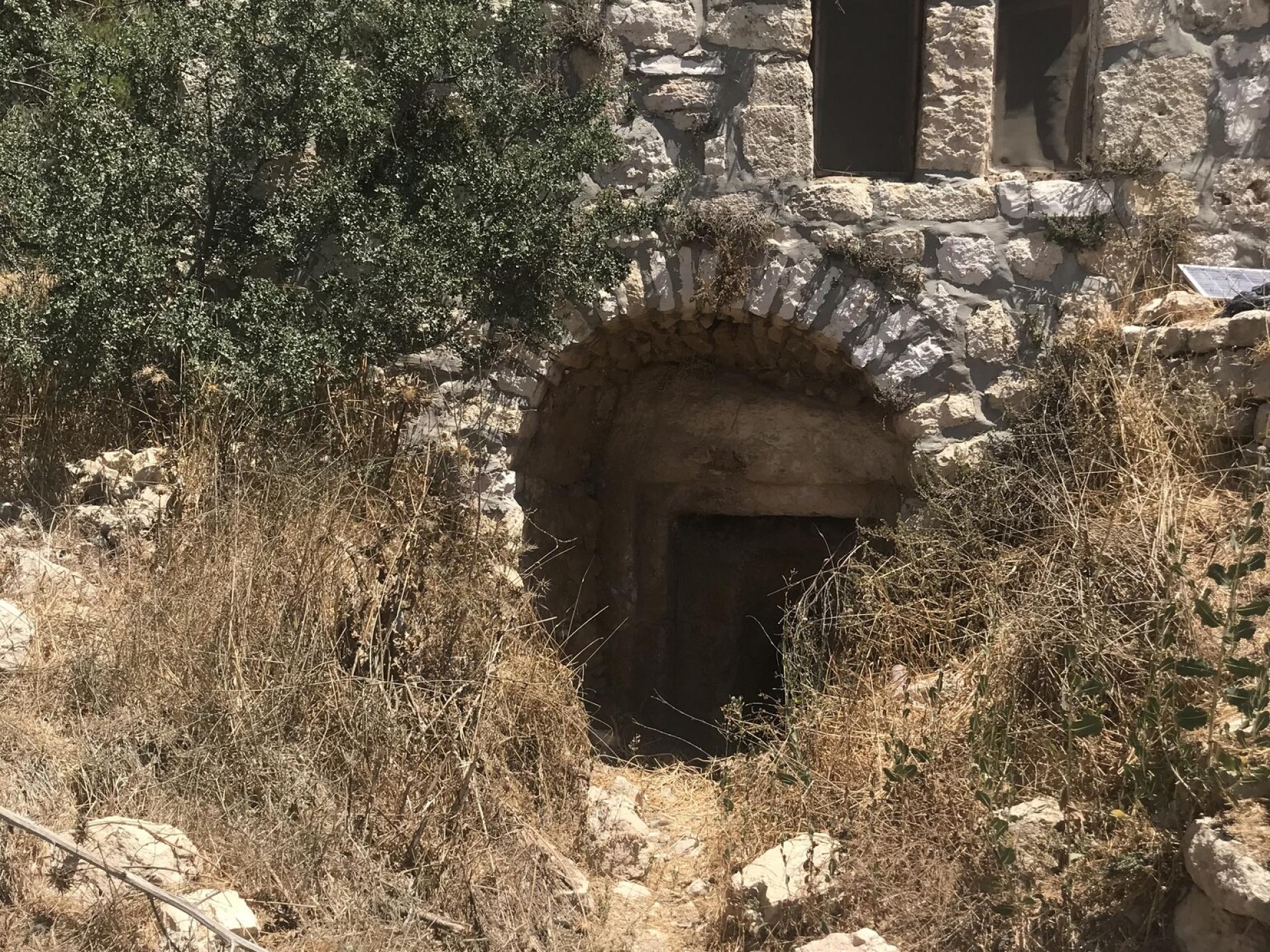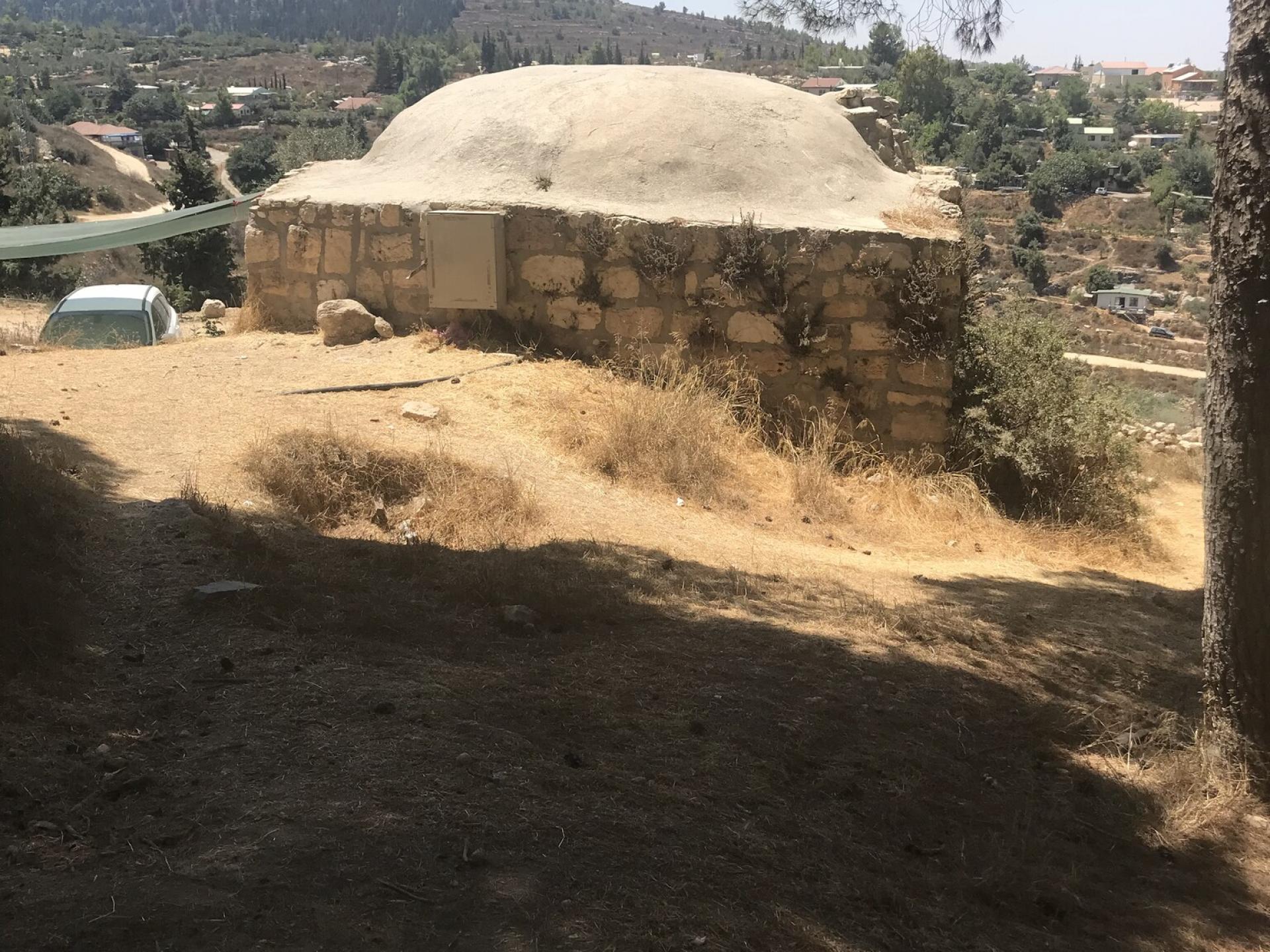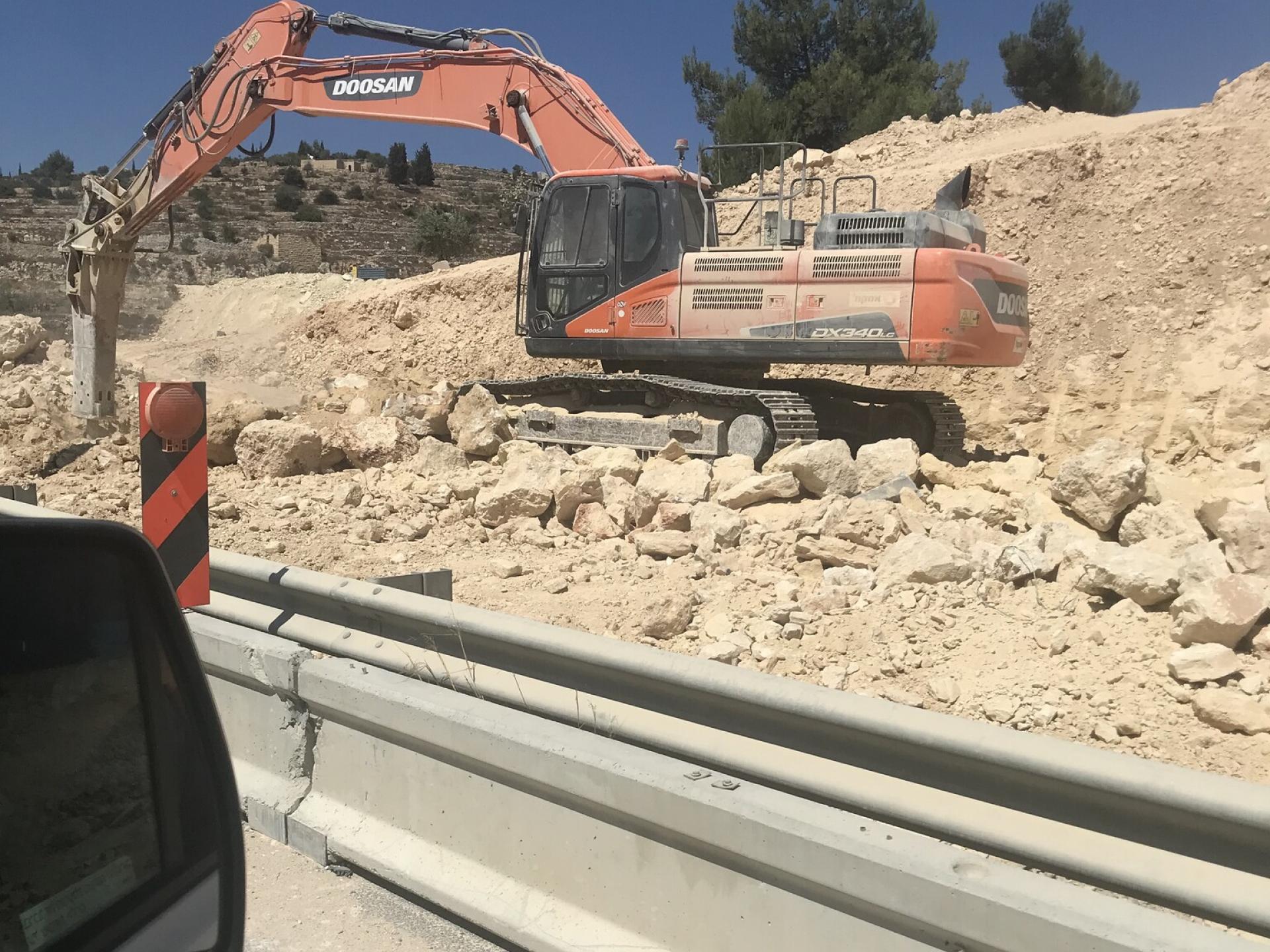Tour of Gush Etzion

We traveled with the intention of observing Bat Ayin, where we would look for the Home of the Sheikh. The building has 2 stories and a domed roof, and we thought that, because of this, it must have been a maqam. Meanwhile, we met one of the inhabitants of the area, who did not know where the House of the Sheikh might be but did know where there were local springs. We followed her and discovered a wonderful place where springs supply water for a number of pools. We found some soldiers there who had received half a day off to enjoy themselves in the water, as well as some religious women with their children. A quiet place and peaceful, and does not reveal the violence hidden beneath the beauty of nature.
Only when we asked one of the residents where the House of the Sheikh was, he answered excitedly, "It isn't really the "House of the Sheikh", we just call it that. He explained to us how to get there. In the place, we found that one of the residents was living there and that an inscription of God's name was inscribed on it. In order to confirm that this was the right place and that it was a maqam, we had to enter inside and check if there was a prayer niche (mihrab), but the door was locked.
Before 1948, this place was "Massuot Yitzhak", and since then, until 1967, there were 85 families living there, refugees from 1948 who came from Beit Jubrin, Agur and 'Ain Habla. In 1967, after the occupation of the West Bank, the inhabitants were expelled to the refugee camps of Al-'Aruv, Aida and Mehiam 'Aza, near Bethlehem. (this information was provided by Abu Ibrahim from Hirbat Zakariah). He also clarified for us that the building was in fact a maqam.
The residents of the place do not allow Palestinians, whether they are citizens of Israel or residents of the West Bank, to enter the area. (they did not identify our driver, Mustafa, as a Palestinian). Only recently, they beat up a bus driver who entered the settlement while transporting workers.
Bat 'Ayyin was built on the lands once belonging to Hirbat Zakariah and Beit Omer. Also the springs described above, 'Ain Abu Zaid, 'Ain Abu Kaliba, 'Ain Sajama and 'Ain Habila were under Palestinian jurisdiction and appropriated by the settlers.
In Hirbat Zakarah we were told by Abu Ibrahim, the head of the local council, that a Master Plan for the area exists which was planned and authorized by the Civilian Administration for 50 residences. The plan was not yet confirmed, but the head of the council is optimistic. The plan relates to 5 villages: Hirbat Zakaria, Halat Balouta, Halat Hibala, Wad Shichiat and A-Shafa; altogether, 97 families. We asked Abu Ibrahim why there were only 50 residences and he laughed and said: First of all, they should just start...meanwhile, because of the Corona crisis, we enlarged the mosque a bit so that it could contain the worshipers from the 5 villages, since it is their only mosque.
He also related that the people from Bat Ayin bother them and come with weapons to Hirbat Zakariah and the surrounding villages. According to him, the Civil Administration and the army come immediately when they call them and provide them with protection.
and the army come immediately when they call them and provide them with protection.
Highway #60
There are extensive roadworks going on in order to widen the highway. This widening has consequences on the lives of the population of El Hader and makes it difficult for them to reach their lands. Crossing the road involves mortal danger and the people of the villages are forced to ride their donkeys for an hour and a half or to drive on an impossible road to get to their vineyards, not to mention the confiscation of their lands for the purpose of widening the highway.




